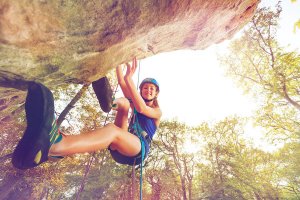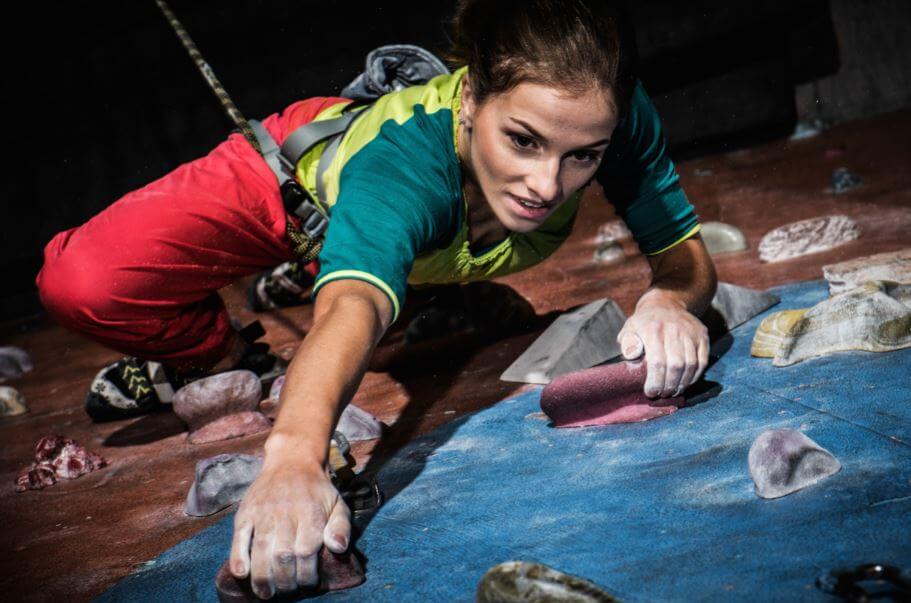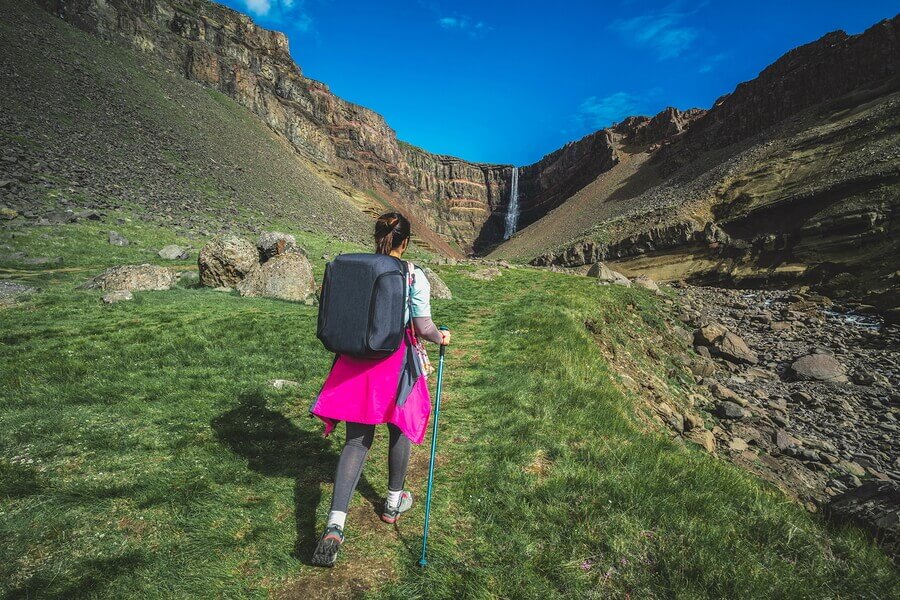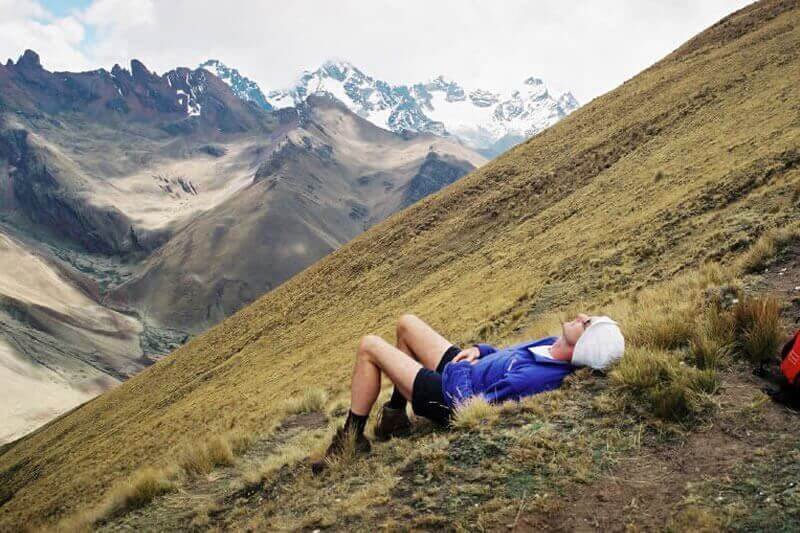Mountain Sports: Get Out and Explore

You can enjoy mountain sports in the summer or winter while taking in nature’s fresh air. In our post today, we’ll fill you in on the most popular mountain sports.
What types of mountain sports are there?
Mountain sports require special clothing and other considerations. For example, there are ideal weather conditions, altitudes that are necessary for certain sports. As for the sports themselves, the most popular ones are:
1. Hiking
Hikers walk along well-marked paths and routes which are normally located in natural parks or reserves. Aside from providing great exercise, hiking can help you know your surroundings as well as teach you to respect the environment. People sometimes confuse hiking with trekking but hiking is less demanding than trekking as it doesn’t span over a number of days.
What conditions does a trail have to meet in order to be valid for hiking? Hiking routes must be walkable all-year-round, offer interesting scenery, exclude significant hills, be accessible to the general population in addition to having appropriate trail-markings.

2. Abseiling: a mountain sport
Abseiling has been winning over many adventurers in recent years. In abseiling, participants descend a near-vertical wall with ropes. Abseiling (which you can see in the featured image) is in the same category as rock climbing and canyoning.
There are different techniques for abseiling: Rescue Style, Dülfersitz (where the ropes are held between the legs) and Comici (where the rope passes over the back). Aside from the ropes, abseiling equipment includes additional ropes for anchoring, carabiner, harness, safety line, and descender. All participants should wear helmets and gloves.
3. Climbing
Rock climbing is the opposite of abseiling. Instead of descending, participants ascend or climb up a wall or mountain with their lower limbs. While climbing is an extreme sport, climbers use special equipment and rely on different techniques to avoid accidents.

Climbing can take on many forms: rock climbing, alpine climbing, ice, mixed (rock and ice), cliffs overlooking the ocean, urban climbing, and slab climbing. Climbing also divides into free-style, classic, competitive, artificial and solo or group categories. Climbers use climbing walls to learn and practice their techniques.
4. Trekking on a mountain
Trekking trips are short journeys on foot, bike or even on a horse, that takes the trekker through a rural area, usually through mountains or forests.
In order for a trip to count as a trek, it must comply with the following factors: safety above all, respect for the environment, planned route, use of directional instruments and no motorized vehicles.

5. Mountaineering
In mountaineering, the main goal is to reach the summit of a mountain. Climbers need to rely on various techniques, specialist knowledge, abilities, and incredible physical stamina to make it to the top.
Having the minimal equipment is essential to get started: provisions (high-energy food sources and water), clothing (special footwear, clothes appropriate for weather conditions, scarf, hat and sunglasses) and basic accessories (crampons, backpack, walking stick, rope, lantern, hand knife, whistle, tent, sleeping bag, etc.)

6. Mountain biking
Mountain biking is another extreme sport that you can practice on mountains. It involves a certain amount of risk as bikers must travel on courses full of obstacles and steep hills with fast descents. Mountain bikes are different than regular bikes as they’re lighter and more resilient.
Mountain biking branches off into different forms: rural or rally, descending, ascending, avalanche, enduro, slalom, marathon, rural bike, jumps and slopestyle.
Lastly, we can’t leave trail running or mountain racing off our list. In trail running, participants run on natural trails, crossing streams, rivers or even having to climb in certain areas. These runs are short-distance and anything more than seven miles is considered an ultra-trail or ultra-marathon.
You can enjoy mountain sports in the summer or winter while taking in nature’s fresh air. In our post today, we’ll fill you in on the most popular mountain sports.
What types of mountain sports are there?
Mountain sports require special clothing and other considerations. For example, there are ideal weather conditions, altitudes that are necessary for certain sports. As for the sports themselves, the most popular ones are:
1. Hiking
Hikers walk along well-marked paths and routes which are normally located in natural parks or reserves. Aside from providing great exercise, hiking can help you know your surroundings as well as teach you to respect the environment. People sometimes confuse hiking with trekking but hiking is less demanding than trekking as it doesn’t span over a number of days.
What conditions does a trail have to meet in order to be valid for hiking? Hiking routes must be walkable all-year-round, offer interesting scenery, exclude significant hills, be accessible to the general population in addition to having appropriate trail-markings.

2. Abseiling: a mountain sport
Abseiling has been winning over many adventurers in recent years. In abseiling, participants descend a near-vertical wall with ropes. Abseiling (which you can see in the featured image) is in the same category as rock climbing and canyoning.
There are different techniques for abseiling: Rescue Style, Dülfersitz (where the ropes are held between the legs) and Comici (where the rope passes over the back). Aside from the ropes, abseiling equipment includes additional ropes for anchoring, carabiner, harness, safety line, and descender. All participants should wear helmets and gloves.
3. Climbing
Rock climbing is the opposite of abseiling. Instead of descending, participants ascend or climb up a wall or mountain with their lower limbs. While climbing is an extreme sport, climbers use special equipment and rely on different techniques to avoid accidents.

Climbing can take on many forms: rock climbing, alpine climbing, ice, mixed (rock and ice), cliffs overlooking the ocean, urban climbing, and slab climbing. Climbing also divides into free-style, classic, competitive, artificial and solo or group categories. Climbers use climbing walls to learn and practice their techniques.
4. Trekking on a mountain
Trekking trips are short journeys on foot, bike or even on a horse, that takes the trekker through a rural area, usually through mountains or forests.
In order for a trip to count as a trek, it must comply with the following factors: safety above all, respect for the environment, planned route, use of directional instruments and no motorized vehicles.

5. Mountaineering
In mountaineering, the main goal is to reach the summit of a mountain. Climbers need to rely on various techniques, specialist knowledge, abilities, and incredible physical stamina to make it to the top.
Having the minimal equipment is essential to get started: provisions (high-energy food sources and water), clothing (special footwear, clothes appropriate for weather conditions, scarf, hat and sunglasses) and basic accessories (crampons, backpack, walking stick, rope, lantern, hand knife, whistle, tent, sleeping bag, etc.)

6. Mountain biking
Mountain biking is another extreme sport that you can practice on mountains. It involves a certain amount of risk as bikers must travel on courses full of obstacles and steep hills with fast descents. Mountain bikes are different than regular bikes as they’re lighter and more resilient.
Mountain biking branches off into different forms: rural or rally, descending, ascending, avalanche, enduro, slalom, marathon, rural bike, jumps and slopestyle.
Lastly, we can’t leave trail running or mountain racing off our list. In trail running, participants run on natural trails, crossing streams, rivers or even having to climb in certain areas. These runs are short-distance and anything more than seven miles is considered an ultra-trail or ultra-marathon.
All cited sources were thoroughly reviewed by our team to ensure their quality, reliability, currency, and validity. The bibliography of this article was considered reliable and of academic or scientific accuracy.
- Ramón Muñoz. 2008. Manual de iniciación a la montaña. Escuela Española de Alta Montaña. http://www.conmacuto.com.es/MANUAL%20DE%20INICIACION%20A%20LA%20MONTA%C3%91A.pdf
- Federación Española de Deportes de Montaña y Escalada. Deportes. http://www.fedme.es/index.php?mmod=
This text is provided for informational purposes only and does not replace consultation with a professional. If in doubt, consult your specialist.








